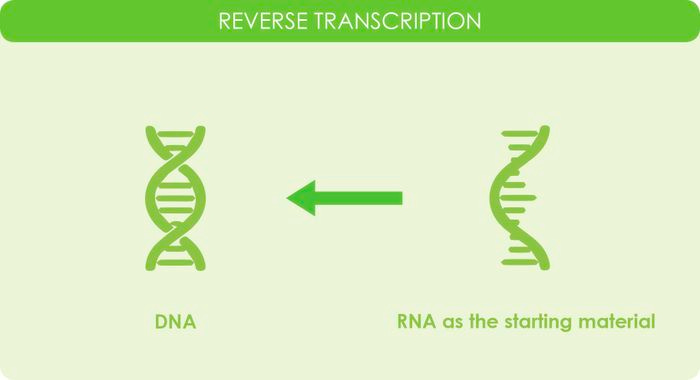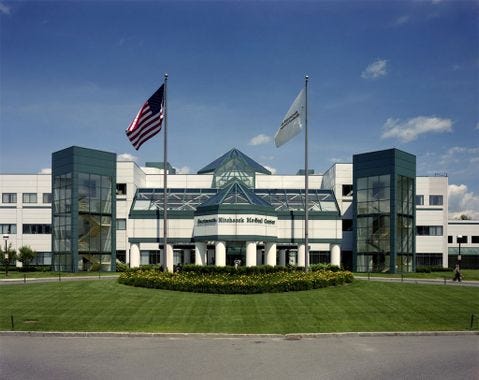PCR Tests Made Easy
Over the past two years the word PCR has become a household name as the “COVID-19 pandemic” has swept the world. As many of you are aware, I’ve made numerous videos about the PCR, written articles, and our book Virus Mania also covers the topic. However, many people contact me and request that the PCR is simplified right back to basics without lots of journal references and analysis of scientific papers. This article aims to cover the topic in an easy-to-read fashion and will not get into (too many) specific details of the PCR and its relationship to clinical diagnostics.
Firstly, PCR is short for Polymerase Chain Reaction. In essence it is a manufacturing tool that was invented by the late Kary Mullis, who won the Nobel Prize for his discovery. Some molecules can be readily detected in biological samples – for example we can measure a protein like albumin in our blood with a direct test because it is present in sufficient amounts. However, genetic material such as DNA and RNA are typically present in such minute amounts that we cannot detect their presence with typical tests. It would be like trying to see a bacterial cell with our naked eye – we simply cannot do it and need to magnify the cell hundreds of times with a light microscope.
So to be able to detect genetic material we need to massively amplify it, not just hundreds of times, but sometimes billions of times. And this is where the Polymerase Chain Reaction comes in handy. The PCR can amplify a selected sequence (a “piece”) of DNA, over and over again, with the enzyme taq-Polymerase until it reaches quantities that we are able to detect. Each cycle doubles the amount of DNA and depending on the application, the process may be run up to about 40 cycles. The number of cycles at which the test becomes “positive” (meaning the target DNA is detected) is called the “cycle threshold” – a low cycle threshold, e.g. 20, implies there is much more of the DNA present in the sample than say a high threshold, e.g. 30. Cycle numbers above 35 can be problematic because at that amount of amplification it suggests that there is a single piece of target DNA in the sample. Cycle thresholds beyond this may simply be artifact, meaning that the selected DNA was not actually in the sample, even though it was positive.
The PCR is very accurate and its ability to amplify specific genetic sequences (if done well) is well accepted. However, this does not mean that it is a good test for diagnosing clinical conditions such as infections. We need to remember that the PCR does not detect a virus, an infection, or an unwell person – it only detects genetic fragments. Kary Mullis was at pains to explain to people that the biggest problem with the PCR was not the process itself but the interpretation of the result.
There are many things that can go wrong with the PCR starting with the way specimens are collected and the way they are processed. We won’t get into those technical details here, in the interest of keeping it simple. For example, the so-called virus “SARS-CoV-2” (the alleged cause of "COVID-19") is said to have RNA inside it. So that the PCR can work, another step is needed where RNA is converted to DNA by the enzyme Reverse Transcriptase.
In any case, so much of where things go astray is firstly how the target sequence is selected and then as mentioned above, how the results are interpreted. For example, with “COVID-19”:
How is it known the selected sequence is completely specific to the virus? No virus has ever been directly isolated from a human and this also applies to “SARS-CoV-2”. Unlike human cells and bacterial cells, we simply can’t be sure where these genetic sequences come from. In contrast to the industry funded “fact-checkers”, many independent medical doctors, scientists, and investigators point out that there is no proof of existence of this virus. In this case, the PCR “tests” are not even calibrated to a virus – that is, the genetic sequences they detect are not from a virus.
Even if the “virus” is proven to exist, what is the significance of its presence? Our bodies have billions of micro-organisms which cause no ill effects for us, and in fact, many are essential to keep us alive. Viral-like particles such as exosomes may contain genetic fragments but are also harmless to us.
The PCR only detects small selected genetic fragments. Genetic fragments are not viruses so to claim a virus has been detected is incorrect. At most, there may be a virus. And no one could say if it was an intact virus that could harm you, or a destroyed one. By itself, it tells you nothing about the condition of the person it came from – and shouldn’t that be the most important thing we want to know?
Accepting there is a virus, and it is harmful, what should the cycle threshold upper limit for a case be set at? We know around the world it is typically 40 cycles but as has been mentioned, anything over 35 is often invalid. Some doctors have suggested that 30 cycles should be the upper limit for “COVID-19” cases. (Because of the points raised I don’t believe that it is valid at any cycle threshold. However, those that promote the “test” need to agree on some parameters.)
Perhaps the biggest warning of how PCR tests could go horrendously wrong was with the false Pertussis epidemic in New Hampshire in 2006. The PCR kits they rolled out were thought to be reliable but when it was finally compared with the gold standard: formally finding the bacteria Bordetella pertussis from patient samples, they were found to be 100% wrong. With regards to “COVID-19” it is even worse as there has been no gold standard to compare the PCR to – one of the major reasons this alleged pandemic can be sustained without check it seems. Nothing has been learnt (or perhaps doesn’t want to be learnt?) and the PCR continues to be promoted as a diagnostic tool for infections such as “COVID-19” even though an Austrian Court ruled that it cannot do this in the way it is being used. For our Virus Mania team, it is no surprise that the PCR is being used in this inappropriate way and we remain more convinced than ever that like the 2006 Pertussis false alarm, there is no current “COVID-19” pandemic because once again the PCR is not detecting a pathogen or an infection.





